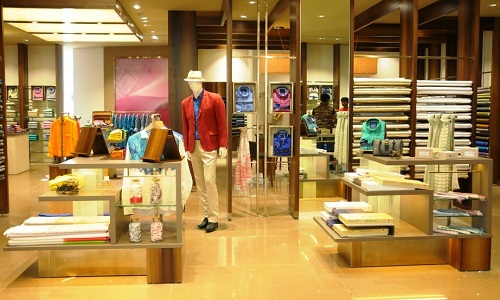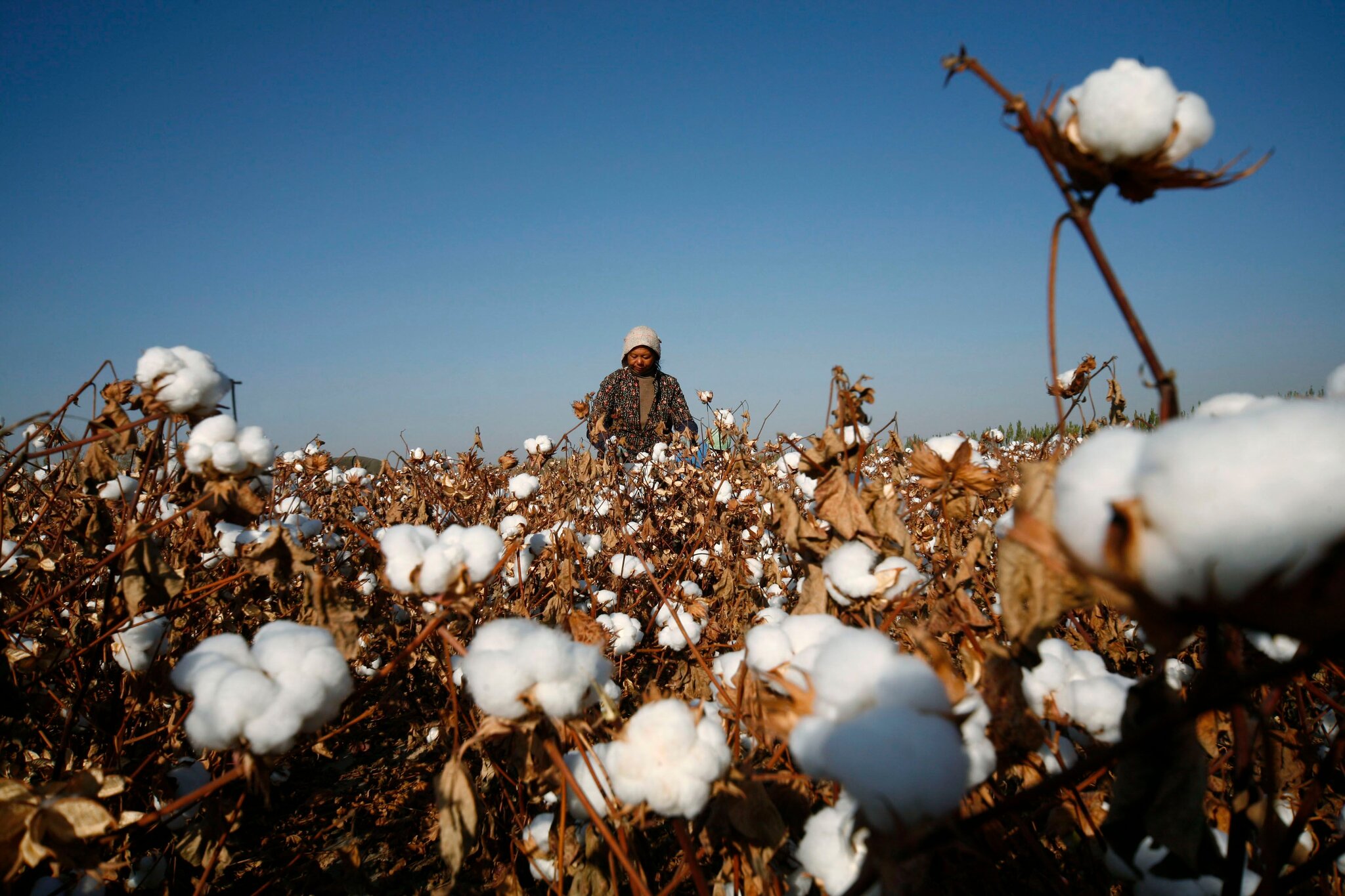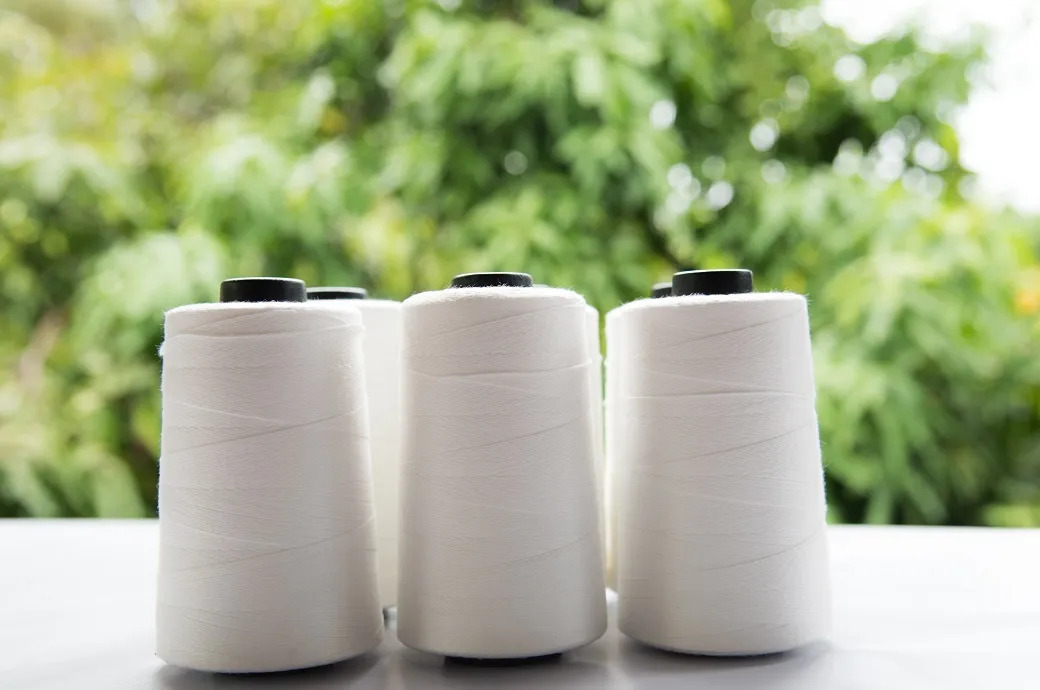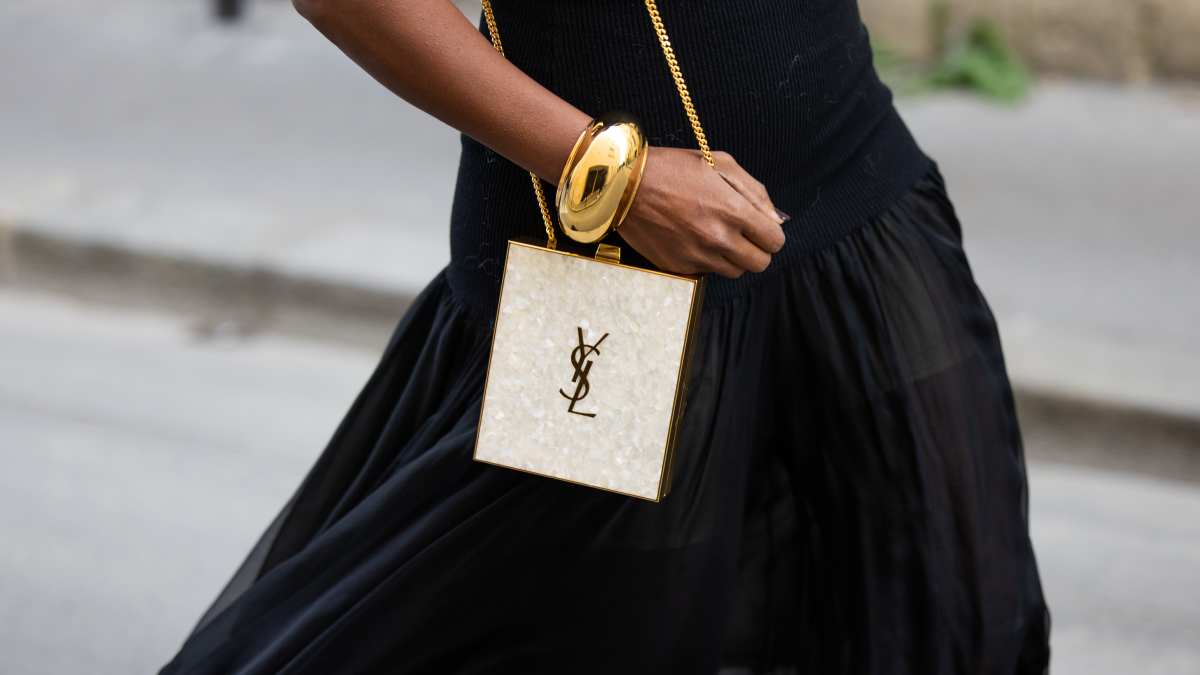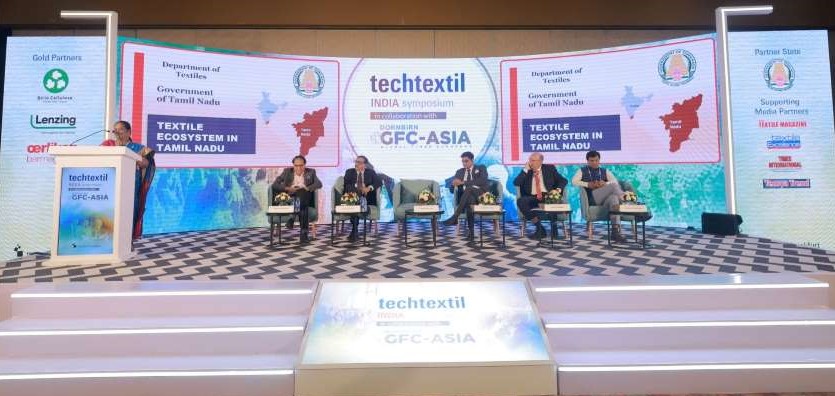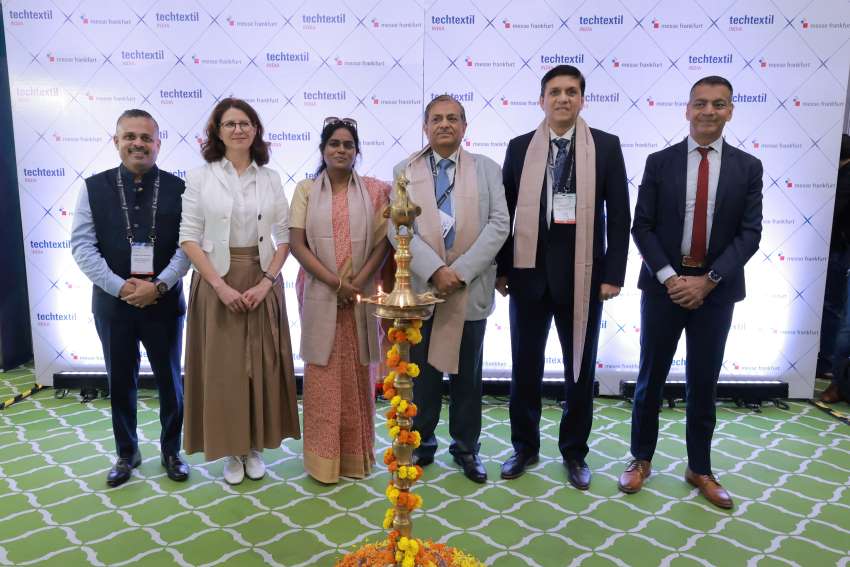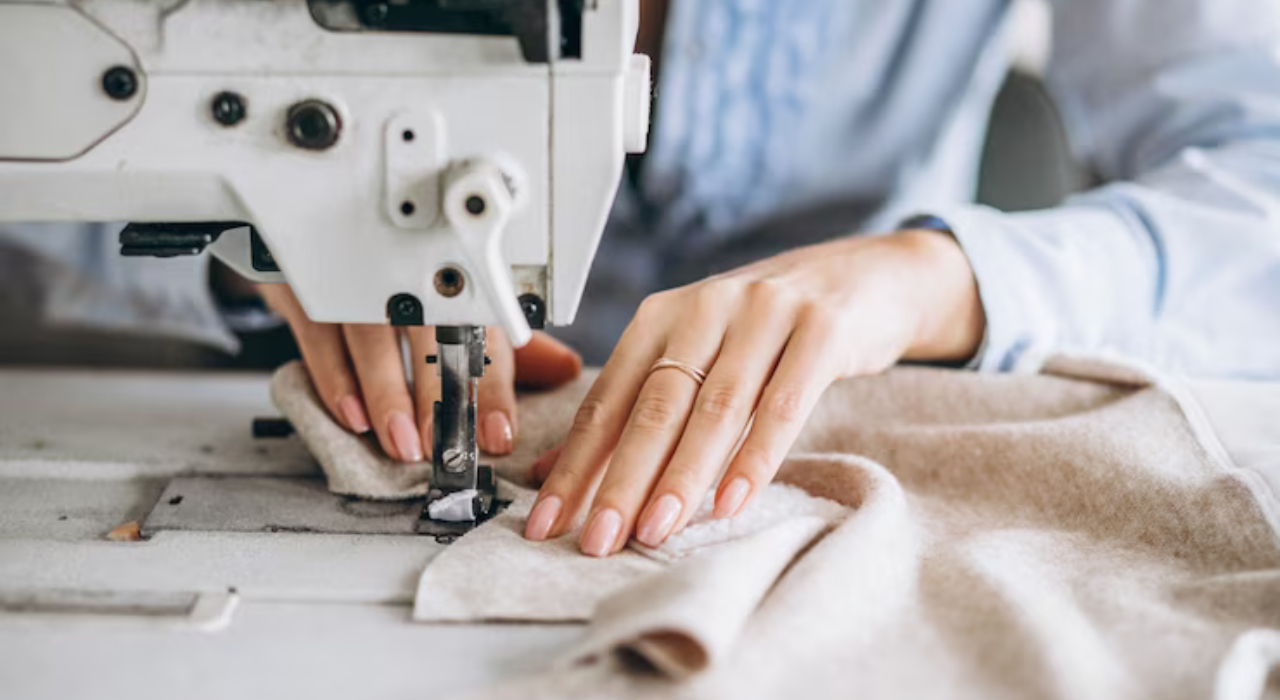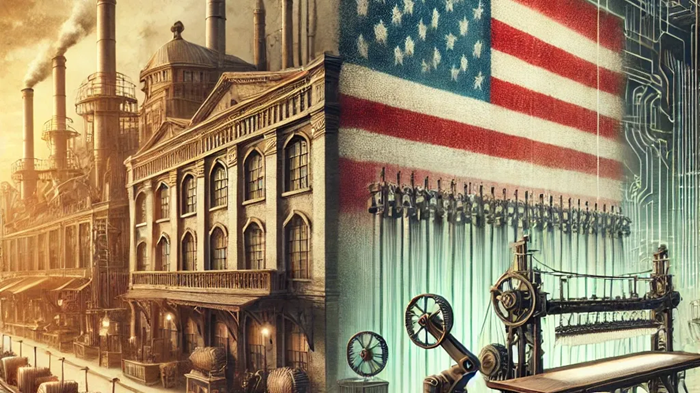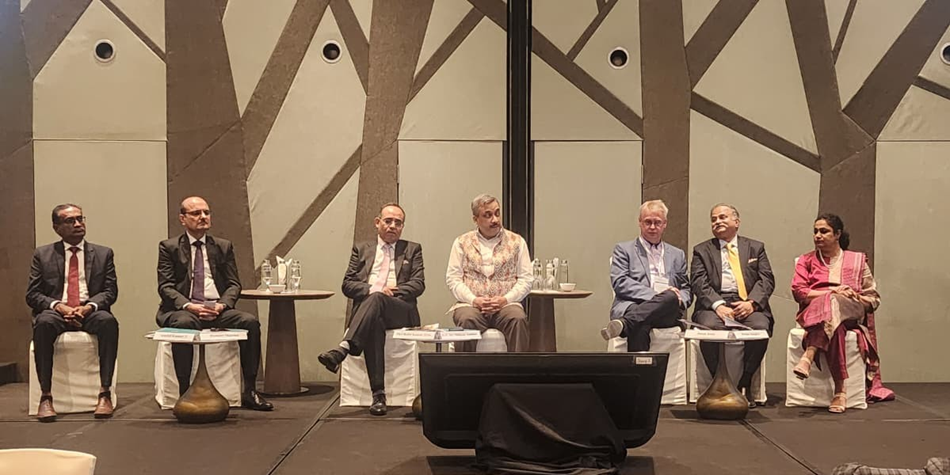FW
"Linen is a designers’ delight because of its matchless properties. However, in India it is still considered a niche, elite fabric and consumption is low as the vast majority still don’t use it. Linen is basically a stem fibre, it wrinkles very easily. The important property of linen is its comfort. It absorbs moisture 20 times more than its actual weight without being uncomfortable to the user. One of the biggest advantage is that linen is naturally anti-allergic and anti-bacterial."
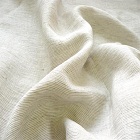
Linen is a designers’ delight because of its matchless properties. However, in India it is still considered a niche, elite fabric and consumption is low as the vast majority still don’t use it. Linen is basically a stem fibre, it wrinkles very easily. The important property of linen is its comfort. It absorbs moisture 20 times more than its actual weight without being uncomfortable to the user. One of the biggest advantage is that linen is naturally anti-allergic and anti-bacterial.
Deepa Chandran, GM, Aditya Birla Fashion & Retail says the Indian linen market is growing at 10 per cent CAGR. Currently 70 per cent linen yarn is imported.“Premium apparel brands import high quality linen. For mediocre usage, Indian fabrics are used. There is a huge potential for making premium fabrics and yarn in India,” he says. The price of linen fabrics is comparatively higher than cotton and viscose. Today, its market price stands at Rs 600 per kg. Another interesting feature of linen is that it can be blended easily with cotton, polyester, viscose and many other fabrics. Pure linen’s retail price in the market starts from Rs 1,200 per metre, while blended linen is available in the range of Rs 400 upwards depending on the ratio of linen.
Basically a European fibre, flax from which linen is made is grown in Russia, Canada, France, etc. It requires certain climatic conditions to grow at its best. Russia has made good stride in linen fibres production. European countries largely grow the fibre for exports. European fibres are considered the best, as they have long length. The longer the fibre, the better the quality of fabric, India and China too have made attempts to grow it. China grows a lot but it is not considered the best quality fibre.
In 60s and 70s, linen was synonymous with home furnishing but with experimentation and usage in the last 10-15 years, linen usage has grown in fashion and apparel sector in a big way. Giving a perspective on Indian market, Chandran says, “Linen is used in trousers and shirts majorly. A pure linen suit can cost up to Rs 16,000, 100 per cent linen shirt can cost between Rs 3,000 to Rs 8,000. Designers like to use linen a lot, blends have a good market also.”
Aditya Birla is operating through 42 countries, having diverse businesses. Linen fabric for Aditya Birla is produced in Kolkata. “Jayashree Textiles exclusively produces it for our in house. We have exclusive linen stores all across the country, Linen fabrics by Aditya Birla Group is retailed through 121 exclusive stores and over 1,000 MBOs on a pan-India basis. We are the largest linen producer despite the fact the entire raw material is imported,” he explains Chandran.
Chandran says there are many players in the market currently who produce the fabric in India. The fabric is suitable for Indian weather conditions. Talking about the concerns facing the linen market in India, Chandran says, “The level of awareness is low and fakes exist. Many blends are sold as pure linen fabrics, which do not give full advantage to the user. Buyers who understand linen contribute to the growth of the fabric in the country. The only challenges are cost and presence of similar looking fabric, which are sold at the same prices as pure linen. Indeed, it is difficult to identify pure linen from look a likes.”
Opportunities galore
There is a huge shift in usage of linen from home furnishing to fashion in the last 20 years. The presence of many global brands and international tourism will contribute immensely towards linen’s growth in India. The fabric has a lot of potential and India can capitalise on it.
The global women’s apparel market is expected to grow at a CAGR of around three per cent during the next five years. The women’s apparel market in Europe is expected to grow at a CAGR of 2.9 per cent over the forecast period. The major markets for women’s apparel are the UK, Germany, France, Spain, Russia, and Italy. In North America, the primary markets include the US, Mexico, and Canada. The US is the largest country for women’s apparel products in the world. Its contribution to the global market was 29.15 per cent in 2015, and its share in the North America was 92.22 per cent. In the next five years, women’s apparel market in North America is expected to grow at a CAGR of 3.01 per cent.
One of the fastest growing segments is luxury clothing, which is expected to grow at a higher year-over-year rate in terms of sales compared to the mass market. Luxury apparel brands such as Louis Vuitton from LVMH, Gucci from Kering, and Hermès have expanded significantly across the globe during the last five years.
With increasing number of consumers focusing on physical fitness, the active lifestyle clothing segment will also likely have greater demand over the coming years. From 2010-2015, women’s active wear and sportswear sales increased by an average growth rate of more than eight per cent.
Donald Trump’s new America First trade policy is seen as anti-free trade. His trade policies are expected to benefit certain people at the expense of others, specifically, workers and producers will benefit at the expense of consumers. The retail and the apparel industries will be hit the hardest. There is virtually no garment industry left in the US, so moving manufacturing back to the high-cost US from low-cost Thailand and China will lead to higher prices for apparel. Higher prices mean fewer sales for apparel firms and retailers. This would be a major blow to both of these struggling sectors.
The main reason a border adjustment tax (BAT) is so popular among politicians is that it is not a tariff. A BAT taxes the full value of a product made by a US firm abroad, thus encouraging producers to make products in the US. With BAT, companies that make products in the US and sell them abroad may deduct the cost of making the product and only pay tax on the net profits.
A border adjustment tax will lead to higher costs for many consumer items. The overall impact of a BAT is twofold: imports cost more (higher prices) and exports cost less (more sales for US exporters).
Sourcing at Magic will be held at The Las Vegas Convention Center from February 20 to 23, 2017. Sourcing at Magic is a subsidiary of UBM Fashion Group. With over 40 countries represented, this event offers a source of inspiration, education and resources that keeps the fashion industry moving and drives businesses. Sourcing at Magic is the fashion industry’s link to the entire global supply chain and attracts designers, brands and retailers alike. It will take a look at how US decisions may impact various free trade agreements and international trade relationships. Experts will analyze these issues and the cause and effect between the supply chain and recent challenges in the global economy such as the elimination of TPP, the continued rise of costs in China and trade issues between the US and China.
Among the highlights at the event is the President Trump seminar. With President Trump taking office, the event will take a look at how the Trump administration may impact various FTAs and global trade relationships. Experts will analyze various issues and how they will effect the supply chain. The African pavilion will have over 11 countries represented. Over the past few years, serious interest in African countries as a major sourcing destination for apparel has grown. The African Growth and Opportunity Act allows certain countries in sub-Saharan Africa duty-free access to the US market. Discussions will be on the shift of fashion sourcing to Africa and how AGOA benefit US companies producing fashion in Africa.
There will be Fabric Trend Galleries, featuring show floor exhibitors and trends for S/S ‘18 by Fashion Snoops. Morphew/Paradox NYC will be providing an insight on vintage prints, embellishments and shape concepts from around the world in a new trend display, and Pantone returns with a new Color of the Year for 2017: Greenery. Footwear at Sourcing at Magic is the only show created for brands and retailers to source their production directly from factories around the globe.
The Organization for Economic Cooperation and Development (OECD) has offered new guidelines for the garment and footwear sectors in Bangladesh. The guidelines represent a move beyond voluntary, non-binding auditing and corporate social responsibility initiatives, which have done little or nothing to protect and improve the rights of workers.
The new standards have been endorsed by brands, labor and industry, and involve real worker participation in identifying risk and violations of human rights, while encouraging direct negotiations with labor.
The guidelines allow workers and trade unions to actively participate in designing and implementing on-site supplier assessments, developing corrective action plans, monitoring impacts and formulating operational-level grievance mechanisms. Significantly, they promote responsible purchasing practices, lack of which can lead to excessive and forced overtime as well as low wages for workers. The guidelines include various modules on sector risks, including child labor, sexual harassment and gender-based violence, forced labor, working time, occupational health and safety, trade unions and collective bargaining, and wages as well as environmental hazards.
By creating mechanisms that link unions, buyers and suppliers, OECD aims to create a framework for genuine supply chain industrial relations for a fair and stable global garment industry. It sees workers not as peripheral to the due diligence process but core to it.
Mexico wants to have closer ties with the east especially Singapore.
Mexico is keen to learn from Singapore's business park expertise when it comes to its special economic zones. These zones will include tax incentives for companies investing in targeted sectors and they present an opportunity for companies in infrastructure development areas such as logistics, petrochemical complexes, utilities and water and waste treatment.
Mexico's massive new international airport is due by 2020 and the country would like Singapore's expertise in airport management and associated activities. Some Singaporean small and medium enterprises are already active in logistics.
There are about 40 Singapore companies of various sizes operating in Mexico. These include a water treatment firm, a textile firm and a plastic parts manufacturer.
As Mexico's relations with the United States have become frostier, the Latin American country is looking for new friends. It has realised that keeping all your eggs in one basket, and having 80 per cent of your output delivered to one client, is not smart in the long term.
In the wake of the collapsed Trans-Pacific Partnership (TPP) deal, of which Mexico had been a party, Mexico wants to convert the TPP into bilateral agreements with the six TPP countries that it does not already have free trade deals with.
These include Singapore, Vietnam, Australia and New Zealand.
Sri Lanka is hosting Textile Coloration conference on March 8, 2017. The conference will bring together textile colorists, buyers, retailers, garmenters, academicians, and researchers from around the world to discuss technical innovations and green initiatives in the textile coloration industry. The event will tackle some difficult questions around technical innovation and environmental sustainability within the textile coloration industry. It will consist of three sessions: compliance in color management, compliance in textile coloration and compliance in fashion.
The conference will help visitors meet the people who are driving the change; get to know the people who have used the new innovations, and learn the path to a better world of coloration. Some of the questions that will be answered during the summit include: What’s the way ahead? Who will pay for the increased cost of sustainability? Is fashion the most polluting industry? How toxic are the clothes that I buy? How organic is organic?
The world is changing fast and colorists have to recognize the challenge. One of the factors affecting the industry is the growing demand from retailers and brands for best performance at low prices. Eco-norms also continue to change frequently, placing colorists under pressure and arguably introducing trade barriers.
Indian cotton exporters have cancelled orders for around 25,000 bales and postponed shipments of about 200,000 bales by up to a month since a supply shortage has pushed up local prices. The move by the world’s biggest cotton producer is likely to help rival suppliers like Brazil, the United States and some African countries boost exports, with some India textile mills even starting to import cheaper fiber from overseas.
Contracts to export nearly 25,000 bales to Pakistan and Bangladesh have been cancelled. Raw cotton supplies usually peak in India between December and February, pushing down prices. This year, local prices have jumped more than 10 per cent over the past two months, with farmers now delaying cotton sales in expectation of further price rises.
Right now Indian cotton is not competitive. Export demand is not much. India has exported around 2.5 million bales so far in the 2016-17 season. In 2015-16 India exported 6.9 million bales, but this year exports could fall to five million bales. Exports will pick up only if Indian prices come in line with international prices.
Pakistan, Bangladesh, China and Vietnam are key buyers of Indian cotton. Farmers are likely to release stocks if local raw cotton prices rise another five per cent but the delay could see local exporters miss out to rivals.
In South Africa children’s clothing is outperforming other lines like men’s wear and women’s wear. Even in a tough economic climate, parents are spending and there is an increased emphasis on value buying.
The advent of technology and rise of social media have also been huge contributors to this growth, specifically in the pre-teen category. Thanks to social platforms such as Instagram and technology such as smart phones, satellite TV and tablets, children now have immediate access to international trends. This has led to an increasingly discerning and style conscious young customer, with the pester power to sway their parents’ purchasing decisions. Greater access to social media means that children’s fashion is inspired by that of social media influencers and celebrities.
Children’s fascination with social platforms that utilise augmented reality – such as Snapchat – will also influence design. Snapchat’s quirky filters may pop up on T-shirts and hoodies. While children are veering away from fussy, complex styles, they are focused on detail, embroidery, lace and even holograms. Siblings are increasingly opting to wear matching or complementary outfits. Establishing their identity is important but children are finding comfort in choosing to express themselves with their siblings.
Children love active wear as it is both fashionable and functional and as they see the athleisure trend become more popular with adults.
Bangladesh and Cambodia are working on a trade deal. This may eventually lead to a bilateral trade agreement that would drop tariffs on imports. Both countries are dependent on the garment industry as the main driver of economic growth, so they are looking at ways that trade can complement each other’s growth. A bilateral trade deal could lead to further garment production despite the countries’ competing for the same global market. If Cambodia could receive tariff-free leather, it would help bolster the kingdom’s travel goods sector, which last July received duty-free access to the United States.
Agreement has been reached on which products and items Cambodia will allow Bangladesh to import and export tariff free. Trade between the two developing nations has been minimal, amounting to just $6.7 million annually. Bangladesh’s main exports to Cambodia include garments, footwear and leather goods while Cambodia primarily exports cotton, cooking oil and fertiliser.
The countries may work to create a labor-sharing agreement that would allow Bangladeshi workers to migrate to Cambodia to fill the garment sector’s skills gap as it produces higher value-added goods. Having workers come from Bangladesh to Cambodia would be good for Cambodia because it would support future growth in manufacturing capabilities.

